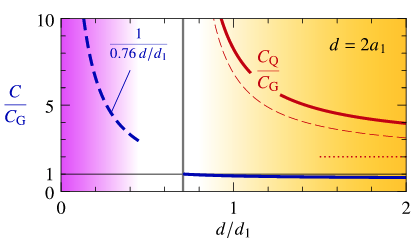Theory of cross quantum capacitance

Impressive progress in the control of atomically thin crystals is now enabling the realization of gated structures in which two electrodes are separated by atomic scale distances. The electrical capacitance of these structures is determined by phenomena that are not relevant in capacitors with larger electrode separation. With the aim to analyze these phenomena, we use linear-response theory to develop a systematic description of capacitance for two coupled electron liquids, accounting for the wave nature of electrons, as well as for the effect of both intra- and interlayer Coulomb interactions. Our theory leads to a general expression for the electrical capacitance in terms of both intra- and interlayer electronic polarizabilities. The intralayer polarizability is directly related to the conventional expression for the quantum capacitance, whereas the interlayer polarizability term accounts for interaction-induced correlations between charges hosted by opposite capacitor plates. We refer to this latter term—which has not been considered earlier—as to the cross quantum capacitance. We discuss the implications of the general expression for the capacitance, show that it leads to established results when the effect of interlayer correlations is negligible, and that the intra- and interlayer polarizabilities play a comparable role for capacitors with very small electrode separation (i.e., cross quantum capacitance effects can be large and cannot be neglected). Using two different approaches, we calculate the capacitance in specific cases, and find that the interlayer polarizability can be either positive or negative, so that—depending on the regime considered—the cross quantum capacitance can either increase or decrease the total capacitance. We conclude by showing that the cross quantum capacitance term can lead to a nonmonotonic evolution of the total capacitance with increasing separation between the capacitor plates, which would represent an unambiguous manifestation of the cross quantum capacitance if observed experimentally.
Christophe Berthod, Haijing Zhang, Alberto F. Morpurgo, and Thierry Giamarchi